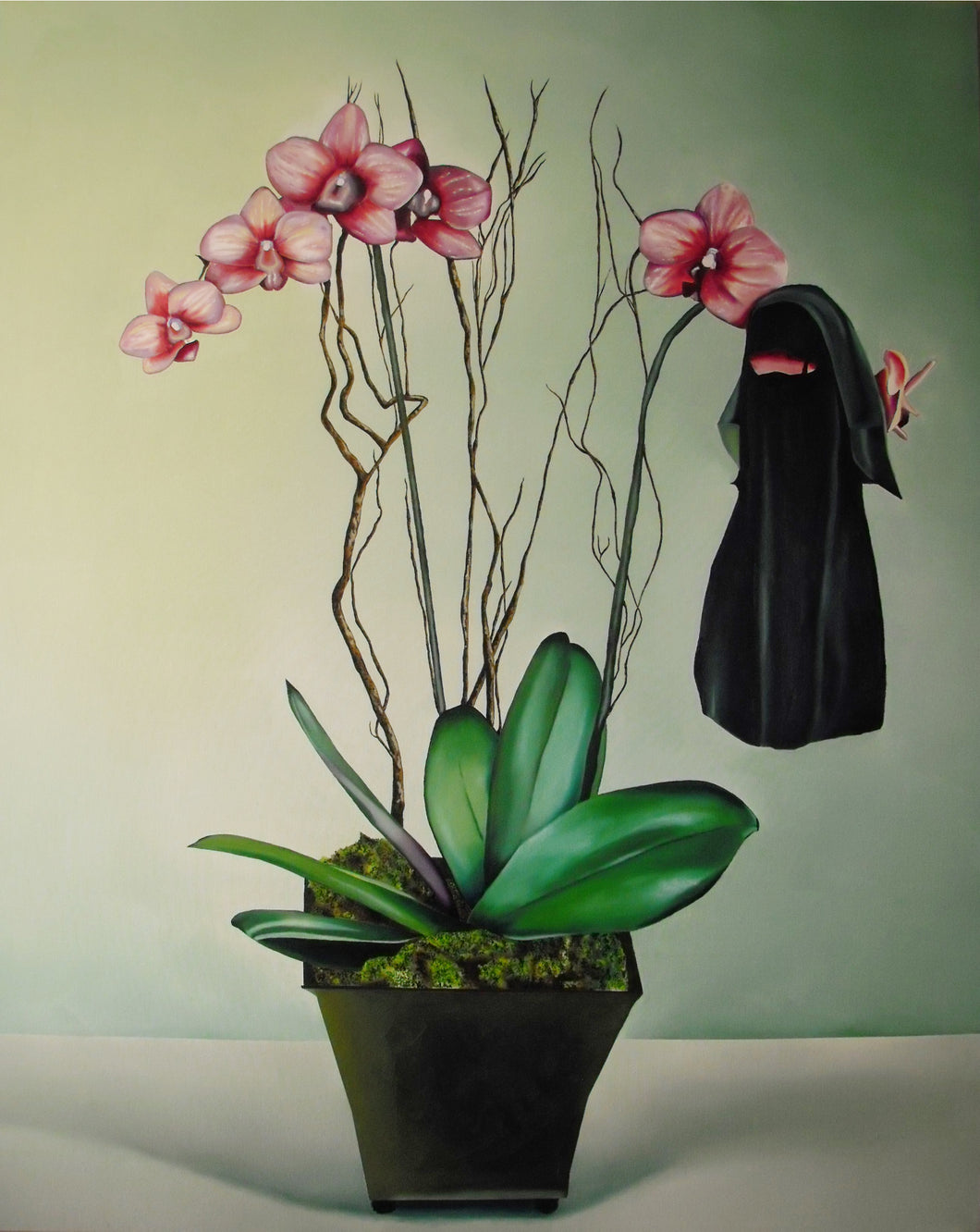
From the series: After "The Tapada Limeña" (The Origins I)
Regular price
€12,000.00
Sale
Oil on canvas. 2008. 150 x 120 cms. €12000.00 plus shipping.
A fashion trend was introduced from the sixteenth century (1560) to the nineteenth century (1860) in Lima during the viceroyalty in Perú and its early years of the Republic. It consisted on women of varied age and social status, wearing a dress that included the “saya” which contoured the hips, and the “cloak”, which covered the face and head leaving one eye uncovered. In quite a lot of occasions, the courtship among its inhabitants revealed surprises often unusual, such as signs of cross-dressing, infidelities and incest due to the inability to recognize a face entirely. Its origins are quite uncertain, although theories suggest that is a marked influence of the Moors and their Muslim dress. Already in its decline towards 1860, the “tapada limeña” was yielding ground to french fashion which remained over the time. No other city in Latin America had a costume of this type.
